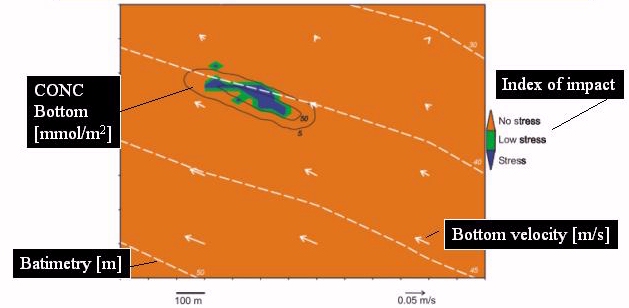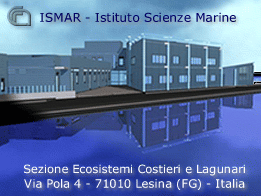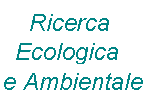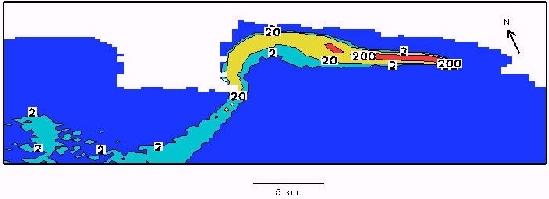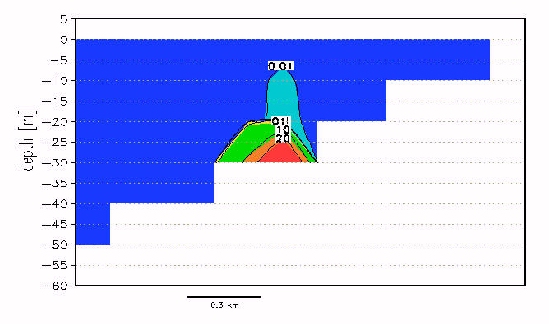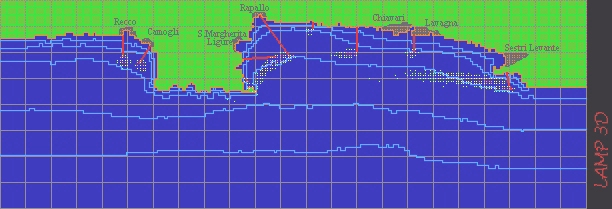
To assign a value to the 'random jump’ ρ, the LAMP3D algorithm uses the FORTRAN generator of pseudorandom numbers with uniform [0,1] p.d.f. to obtain a normal probability density distribution with zero mean and given standard deviation σ. Thus the standard deviation is a model input parameter and the user have to assign its value on the basis of field or experimental data. The model uses a constant standard deviation value on the horizontal grid which decreases, as the intensity of turbulent processes, with the depth:

Specific properties can be assigned to each single particle. An exponential decay which uses the T90 parameter is applied to decaying particles:

A sedimentation velocity w=(0,0,wsed ) is added to deterministic velocity U of settling particles.
POM is a finite difference, free surface numerical model utilizing the Boussinesq and the hydrostatic approximations (see POM Home Page, POM at Genova ). It adoptes the mode split technique: the two-dimensional calculation of the free surface elevation and the velocity transport in barotropic approximation is separate from the three-dimensional calculation of velocity and thermodinamics. The barotropic approximation (POM2D) is simplier to calibrate, more numerically stable and faster as computing time. The two model POM2D and LAMP3D had been coupled and run together. As shown in Fig.1 POM2D provides the depth averaged current field to LAMP3D. The dispersion model contains a submodel based on the Ekman transport and on the mass conservation, to obtain a 3D field for the three components of the velocity (see below). Then LAMP3D executes the dispersion calculation and the counting of particles on the numerical grid. The output data are printed by the POM2D subroutines.
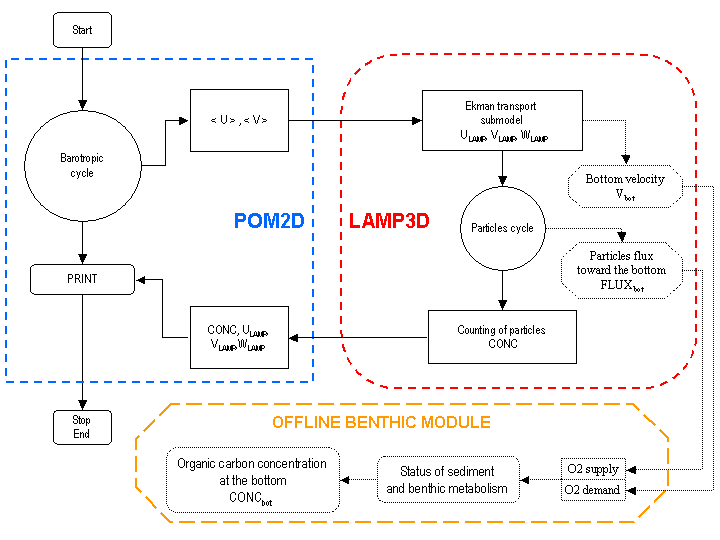
The LAMP3D model can directly use a 3D deterministic current field, but it still have an algorithm to obtain from a 2D depth averaged velocity field a 3D velocity field. This scheme is based on the Ekman velocity profile and on the mass conservation. Even if the Ekman spiral details are very rarerly measured, the transport integral on the water column has been frequently observed both in deep water and in coastal waters. In a limited layer, the horizontal velocity at a given depth can be obtained by:

Where
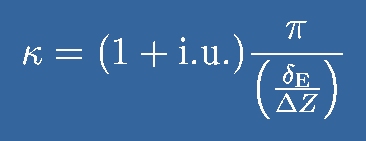 is a complex function of Ekman depth,
is a complex function of Ekman depth,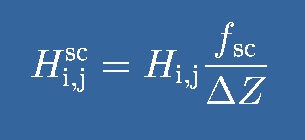 is a suitable scaled value of bathymetry datum and
is a suitable scaled value of bathymetry datum and is the transformation factor.
is the transformation factor.Then by the mass conservation the 3D field of the vertical component is obtained.
To improve the predictive capability of the model in aquaculture impact studies, a new tool regarding settled matter has been developed (FOAM Finite Organic Accumulation Module, De Gaetano et al.,2008).
Following Findlay and Watling (1997), the benthic metabolism has been related to the ratio O2sup/O2dem, where O2sup is the oxygen supply calculated using modeled flow velocity at the bottom and O2dem is the oxygen demand due to the modeled carbon flux to the sediment. On the basis of calculated status of sediment (not stressed, low stressed, stressed), three different rate of organic carbon mineralization (De Gaetano et al.,2010)are taken into account to calculate the element concentration at the bottom (see Fig.2). At this purpose, a high resolution grid module has been added offline to the POM2D-LAMP3D code (see Fig.1).
